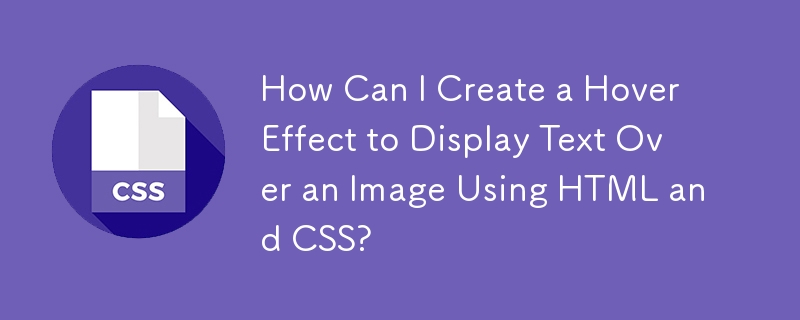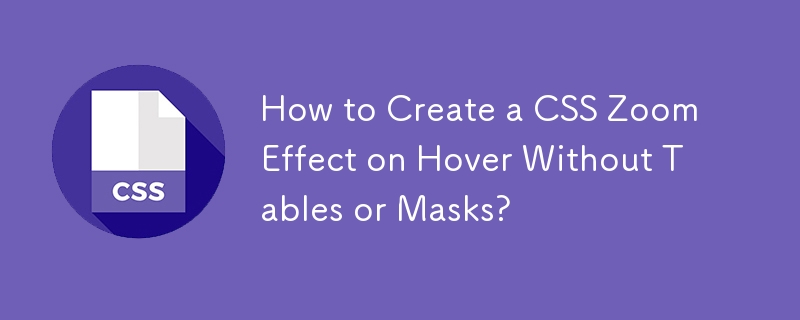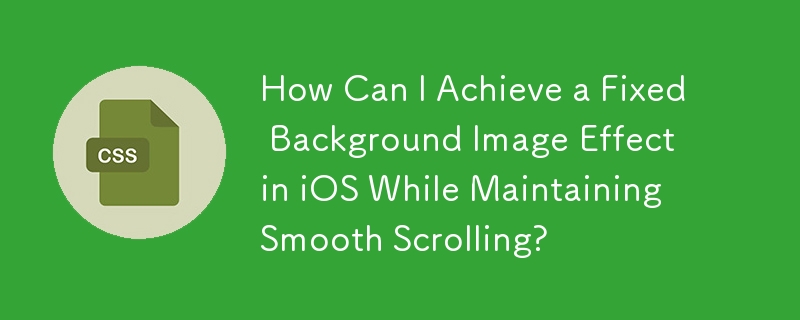Found a total of 10000 related content
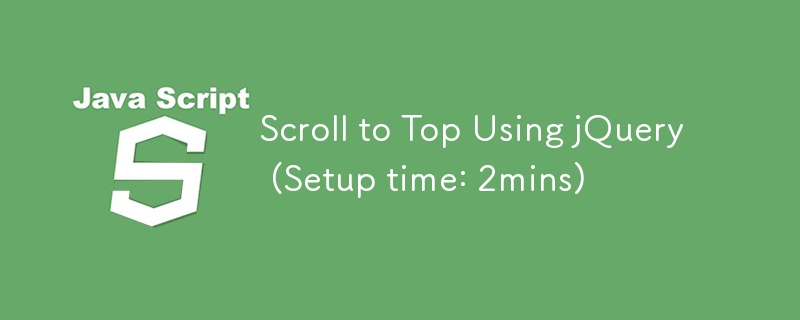
Scroll to Top Using jQuery (Setup time: 2mins)
Article Introduction:Quickly create a website back to top scrolling function (set time: 2 minutes)
This guide will guide you step by step how to set up the Back to Top feature on your website. Just scroll down this page to view the demo.
Download the scrollTo plugin and include it.
Get an image (arrow or similar).
Contains the following HTML code.
Contains the following jQuery/JavaScript code to capture window scrolling and process the display of images.
It's that simple!
HTML
jQuery
This jQuery code displays the image when the user scrolls down, hides the image when scrolling up, and processes click events.
$(document).ready(funct
2025-02-24
comment 0
882
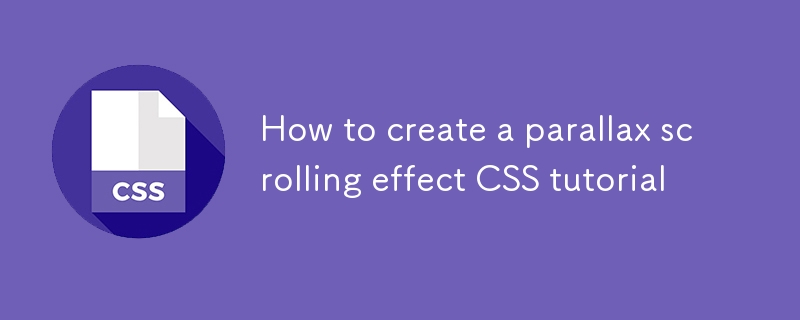
How to create a parallax scrolling effect CSS tutorial
Article Introduction:The key to making parallax scrolling effect is to allow elements of different layers to scroll at different speeds. 1. First, build a multi-layer HTML structure, including background, medium scene and foreground, and use CSS to set the container overflow:hidden and absolute positioning; 2. Then listen to scroll events through JavaScript, use transform:translateY() to dynamically adjust the positions of each layer. The background layer scrolls slowly and the medium scene is slightly faster; 3. Finally, optimize performance, use throttling functions to control the scrolling frequency, compress image resources and adapt to the mobile terminal, and consider pure CSS solutions to improve compatibility.
2025-07-04
comment 0
818
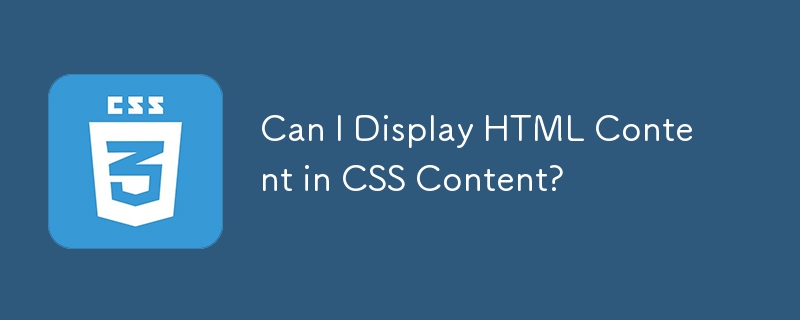
Can I Display HTML Content in CSS Content?
Article Introduction:This article explores the limitations of displaying HTML documents or fragments directly within the CSS content property. Despite this constraint, it presents creative workarounds to achieve a similar effect. These methods include utilizing SVG image
2024-10-23
comment 0
581
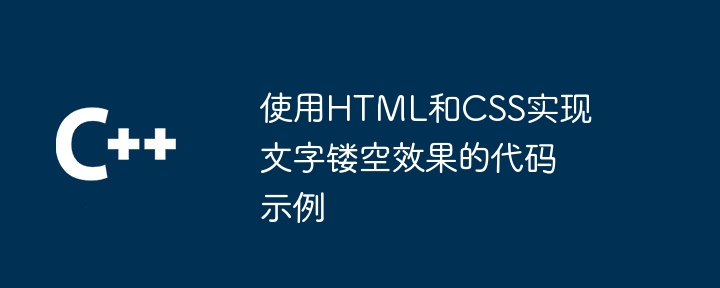
Code examples for using HTML and CSS to achieve text hollowing effect
Article Introduction:To achieve text hollowing effect using HTML and CSS, the following steps are required: Set a background image for HTML elements through the background-image attribute. Use the clip-path attribute to define the shape of the hollowed-out area, including rectangles, circles, ellipses, and polygons. Describe the specific shape of the hollow area through SHAPE-DEFINITION, for example, using circle (50% 50%, 50%) to create a circular hollow for text.
2025-04-04
comment 0
1103

Vanilla Javascript: Creating Animated Sticky Navigation Menu
Article Introduction:Core points
Create an animated sticky navigation menus without the need for a jQuery plugin using pure JavaScript, CSS, and HTML. The menu is designed to slide out of view when scrolling down and slide back into view with a translucent effect when scrolling up.
This process involves setting up the basic HTML structure, applying styles to main elements, and then animateing the menu. The animation is triggered by attaching the event handler to the scroll event and using CSS transformation to adjust the position and appearance of the menu according to the scrolling direction.
This custom solution provides more design flexibility and allows easy customization to be done according to specific needs. The end result is a dynamic interactive navigation menu that enhances the user experience.
Web navigation menu design needs to consider many factors, such as dishes
2025-02-16
comment 0
1131

How does the srcset attribute help with responsive images in html?
Article Introduction:srcset is an attribute of tags in HTML that defines multiple image sources, allowing the browser to select the most appropriate image based on the device's screen size and resolution. 1. It improves page loading speed and user experience, avoiding unnecessary large image downloads or blurred displays. 2. Use the w descriptor to specify the image width. Combined with the sizes attribute, the browser can select the best image according to the layout width. 3. A pixel density descriptor such as 2x can be used to provide a clearer image for high-resolution screens. 4. When using it, src should be included as a fallback, and ensure that the image size is accurate and optimized well. Cross-device testing should be carried out to ensure the effect.
2025-07-07
comment 0
678

How to align an image to the right or left of text in HTML?
Article Introduction:To make the image line next to the text in HTML, you can achieve the following three methods: 1. Use the float attribute to achieve the text-surrounding image effect, which is suitable for traditional layouts and should be careful to clear floats; 2. Use the flexbox layout to display the image and text side by side, suitable for card-style or icon text structure in modern web pages; 3. Set text-align to control the alignment of a single line of the image through the parent container, which is suitable for scenes without text surrounding. Just choose the right method according to actual needs.
2025-07-08
comment 0
161

How does the H5 page production reflect the effect
Article Introduction:The performance of H5 pages involves all aspects, including: HTML structure, CSS style, JavaScript interaction, as well as performance optimization and best practices. In H5 code, HTML is responsible for structure, CSS is responsible for style, and JavaScript is responsible for interaction. Optimization technologies include image compression, code optimization, caching strategies, etc. to ensure user experience. In short, the H5 effect is a systematic project that requires comprehensive consideration of design, code, performance and other aspects.
2025-04-06
comment 0
549

What are tags, and what are they used for?
Article Introduction:Meta tags have four core functions in HTML pages: 1. Define basic web page information, such as character sets, authors and descriptions; 2. Control the display effect of the mobile terminal and adapt to the viewports of different devices; 3. Provide title, description and image information during social sharing; 4. Control search engine indexing behavior to determine whether the page is included or tracked links.
2025-06-22
comment 0
154

How to use the srcset and sizes attributes for responsive images?
Article Introduction:srcset and sizes are key properties used in HTML for responsive images. 1.srcset provides multiple image versions for the browser to choose, such as pictures of different widths or pixel density; 2.sizes tells the browser the display width of the picture under different screen conditions, helping the browser to select the most suitable image resource based on the viewport size and device pixel ratio; 3. When using it, you should prepare multiple sizes of pictures, clearly named, test device behavior, pay attention to performance trade-offs, and retain fallback's src pictures to ensure compatibility and default display effect.
2025-07-09
comment 0
423

Understanding the purpose and usage of HTML attributes.
Article Introduction:HTML attributes are the way to add extra information to HTML tags, used to configure elements or adjust their behavior. Common attributes include class, id, src, alt, placeholder, etc. They are written in the start tag in the form of name="value", such as href specifying the link address, and alt provides alternative text for the image. Attributes are widely used, such as required to set the input box, triggering JS functions (onclick), and boolean attributes (disabled, checked) to take effect without a value. When using it, you should use quotes to wrap the attribute value, especially if it contains spaces or special characters; specific attributes are only applicable to the corresponding tag; custom
2025-07-02
comment 0
175

How to make your HTML responsive for mobile devices?
Article Introduction:The key to achieving friendly display of web pages on mobile phones is the coordination of HTML and CSS. The following points should be paid attention to: 1. Set the viewportmeta tag to ensure correct rendering on the mobile side; 2. Use media query to apply styles according to different screen sizes; 3. Use flex or grid to achieve elastic layout; 4. Control the image size to adapt to different containers; 5. Use developer tools, real machines or online tools to verify the effect during testing. Every step is crucial, and omissions can affect the overall responsive experience.
2025-07-05
comment 0
659
